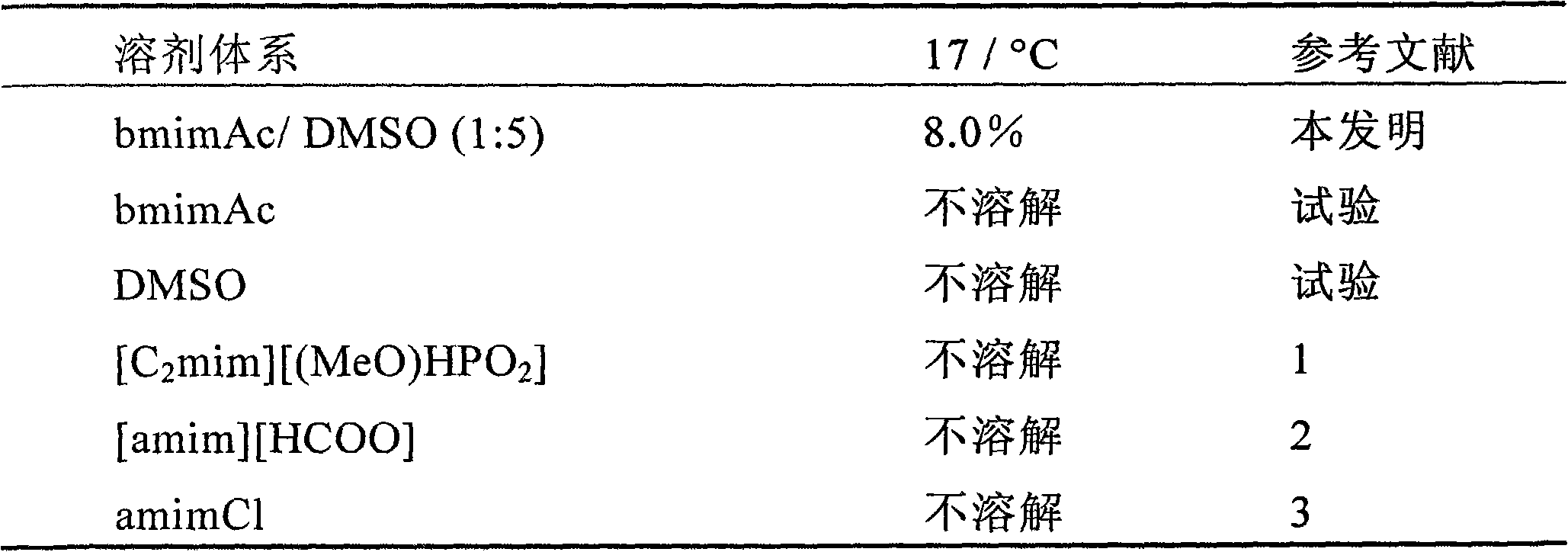Solvent of cellulose
A cellulose and solvent technology, applied in the field of solvents, can solve problems such as toxicity, harsh operating conditions, and cellulose degradation
- Summary
- Abstract
- Description
- Claims
- Application Information
AI Technical Summary
Problems solved by technology
Method used
Image
Examples
Embodiment Construction
[0004] The present invention first screens out the ionic liquid 1-butyl-3-methylimidazolium acetate (bmimAc) which has a strong dissolving ability to cellulose, and then screens out the co-solvent dimethyl sulfoxide which can be miscible with (bmimAc) (DMSO), and then bmimAc and DMSO are dissolved in a certain proportion to form a composite solvent. After a large number of tests, the composite solvent made by bmimAc and DMSO with a mass ratio of 2:1-1:5 has excellent fiber-dissolving properties. The performance of cellulose has achieved the effect of dissolving cellulose in large doses at room temperature.
[0005] The present invention has following embodiment:
[0006] 1). A large dose of cellulose is dissolved at room temperature, which is obviously better than other solvents under the same conditions. For example: at 25°C, the solubility of microcrystalline cellulose in bmimAc / DMSO (1:1) can reach 15.0%; at 17°C, the solubility of microcrystalline cellulose in bmimAc / DMSO...
PUM
 Login to View More
Login to View More Abstract
Description
Claims
Application Information
 Login to View More
Login to View More - R&D
- Intellectual Property
- Life Sciences
- Materials
- Tech Scout
- Unparalleled Data Quality
- Higher Quality Content
- 60% Fewer Hallucinations
Browse by: Latest US Patents, China's latest patents, Technical Efficacy Thesaurus, Application Domain, Technology Topic, Popular Technical Reports.
© 2025 PatSnap. All rights reserved.Legal|Privacy policy|Modern Slavery Act Transparency Statement|Sitemap|About US| Contact US: help@patsnap.com

